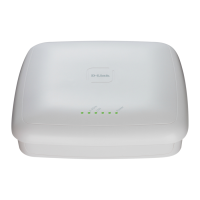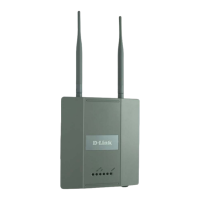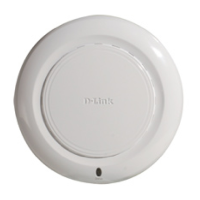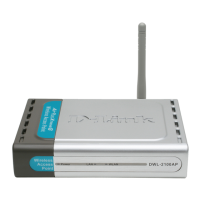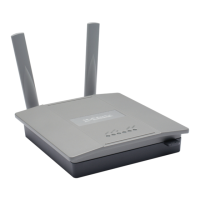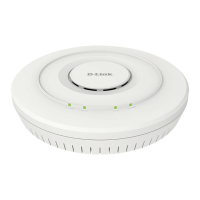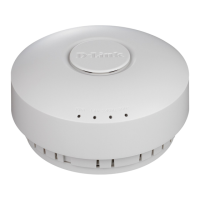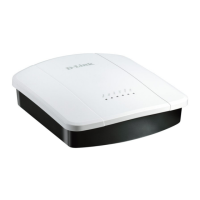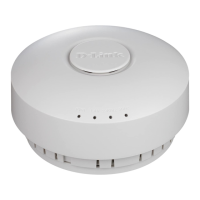Software User Manual D-Link Unified Access System
02/15/2011
Document 34CS3000-SWUM104-D10 Page 117
Use the buttons at the bottom of the page to perform the following tasks:
• Click Cancel to cancel changes selected in the menus on this page.
• Click Apply to apply changes you typed in the fields on this page.
Channel The Channel defines the portion of the radio spectrum that the radio uses for transmitting and
receiving. The range of channels and the default channel are determined by the Mode of the
radio interface.
IEEE 802.11b/802.11g modes (802.11 b/g) support use of channels 1 through 11 inclusive,
while IEEE 802.11a mode supports a larger set of non-consecutive channels (36,40,44, 48,
52, 56, 60, 64, 149, 153, 157, 161, 165).
NOTE: The available channels depend on the country in which the APs operate.
NOTE: For radios that use 802.11a mode, some countries have a regulatory domain that
requires radar detection. For these countries (based on the country code setting), the radio
automatically uses the 802.11h protocol for selecting the channel if radar is detected on the
statically assigned channel.
Interference can occur when multiple access points within range of each other are
broadcasting on the same or overlapping channels. The impact of this interference on network
performance can intensify during busy times when a large amount of data and media traffic is
competing for bandwidth.
If you select auto, the AP scans the RF area for occupied channels and selects a channel from
the available non-interfering, or clear channels.
If you specify a channel, make sure that the channel does not interfere with the channel that
neighbor APs use.
Power Status The status is one of the following:
• None
• Set Requested
• Set Complete
Power The power level affects how far an AP broadcasts its RF signal. If the power level is too low,
wireless clients will not detect the signal or experience poor WLAN performance. If the power
level is too high, the RF signal might interfere with other APs within range.
Table 26: Managed AP Channel/Power Adjust
Field Description
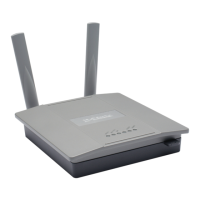
